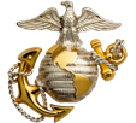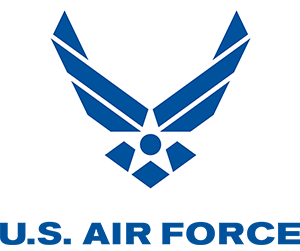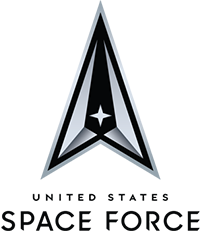Education & Training
Advanced Training
Sometimes referred to as Advanced Individual Training (AIT), or simply advanced training, skill training takes place after a service member completes Basic Training. Skill training refers to the instruction a service member receives in his or her assigned military career field.
Depending on career specialty, a service member attends one of many skill training schools. While there, he or she learns the skills necessary to succeed at his or her specific career through hands-on training, classroom sessions and field instruction.
While the purpose and fundamentals of AIT remain consistent across all Service branches, each offers its own unique experience.
Army Advanced Individual Training (AIT) School
Army Advanced Individual Training (AIT) spans career fields ranging from artillery to avionics to advanced technology (which includes sophisticated battlefield air defense systems, digital-burst radio systems and fire-control computers).
More than just hands-on career training and field instruction, Army AIT focuses on discipline and work ethic — two important virtues both in and out of the Military. This training is not only essential for the demands of 21st-century defense, but also makes Soldiers more marketable in today’s information-based society.
As the largest branch of the Military, the Army also trains personnel in everything from business administration to food service, logistics and procurement — just about any job you can find in a major city.
How Military Cyber Students Become Cyberwarriors
See how military cyber students develop technical skills to defend against an ever-present and ever-increasing threat.
Length 2:09 View TranscriptTranscription
Master Chief Petty Officer Aaron Manning, U.S. Navy: Cyber is truly a joint-warfare area.
Chief Petty Officer Nachelle Scott, U.S. Navy: Information warfare is it right now.
Aaron: We're charged with making sure that the data that we produce and store internal to our networks stay safe. We are a target of everyone.
Petty Officer First Class Michelle Reimers, U.S. Navy: The threat is very real. It exists every single day, and that's something that our students quickly find out while they're going through training here.
Michelle: When the students first arrive here, we tell them, “This is gonna be hard. It might be the hardest thing you’ve ever done in your life.”
Seaman Apprentice Kyle Johnson, U.S. Navy: JCAC is the Joint Cyber Analysis Course. It was designed to bring somebody who has never worked with computers to an advanced user. It starts with the fundamentals of computers and computer architecture.
Seaman Janelle Fajardo, U.S. Navy: Last week I was learning about defensive cyberoperations.
Seaman Mikaela Mujwid, U.S. Navy: Right now I’m in mod 12, and we’re learning about wireless.
Kyle: Next week we’re learning our classified mod, so not, not too much to talk about there.
Aaron: Over the course of six months, we give them almost two full years of college in a computer science degree.
Seaman Jordan Wilkie-Tasequah, U.S. Navy: This culture of constant learning has developed a mindset that I didn’t even know I had.
Janelle: I like challenges. I personally feel like if I’m not being challenged in life, then what’s the point of doing what I’m doing?
Michelle: When students go to their next command, they’re gonna focus on one side or another. They’re gonna be on the offensive side or they’re gonna be defending our network specifically.
Petty Officer First Class Gary Stroehlin, U.S. Navy: Being a great cyber warrior is defined by someone who is not afraid to go out there, learn new things. 'Cause the moment you stop learning is the moment we start falling behind.
Michelle: To succeed as a cyber warrior, you have to be motivated, you have to be driven, and you have to be passionate about this field.
Janelle: I'm just excited for the future. I can't wait to put everything into practice.
Kyle: This experience has opened hundreds of paths. It's amazing what opportunities are available to us.
How Military Cyber Students Become Cyberwarriors
Marine Corps Military Occupational Specialty (MOS) School
After the completion of their basic and infantry training, Marines head to their assigned Military Occupational Specialty (MOS) School, where they are trained to become proficient in a selected specialty. The Marine Corps stays ready by training every Marine for a specific role that contributes to the mission.The advanced training for Marine-Air-Ground-Task Force (MAGTF) can be broken down into four elements:
- Command
- Ground combat
- Aviation combat
- Logistics combat
Marines with an MOS classified under infantry are trained at the Infantry Training Battalion (ITB), while all non-infantry Marines are trained at the Marine Combat Training Battalion (MCT).
After that, Marines receive either formal school training or on-the-job training, with special emphasis placed on hands-on training and practical skill application in every job.

Air Force Technical Training
Air Force technical training provides instruction on mechanical, administrative, general and electronic careers from highly trained instructors with years of experience in the field. Much of Air Force technical training can be applied toward college credit.
In addition, the Air Force offers the opportunity to earn an Associate in Applied Science (AAS) degree free of charge. Some airmen can earn a degree from the Community College of the Air Force (CCAF).
Transcription
Related Videos
Career Focus: Navy Cryptologic Technician
Career Focus: Navy Cryptologic Technician
Night Mission Training
Night Mission Training
Diagnostic Imaging Training
Diagnostic Imaging Training
Coast Guard “A” School
The Coast Guard and Coast Guard Reserve train enlistees in a variety of career fields at its Maritime Enforcement Specialist "A" School. These fields include safety and law enforcement, maritime patrols, technology, environmental operations and business administration, amongst others.
Many job skills learned in these career fields can transfer to the civilian workforce for a post-military career. Marine ecology and environmental studies are two areas of advancement the Coast Guard has worked closely with its civilian counterparts to develop.
Air Force Services Career Field
Airmen in the Services career field learn how to provide food, lodging, readiness and fitness to keep their fellow service members comfortable, whether they are on base or deployed.
Length 1:51 View TranscriptTranscription
Tech. Sgt. Lashawondra Bills: The Services career field is one of the best-kept secrets in the Air Force.
Airman Randall Briggs: The four careers in services are food service, lodging, readiness, and fitness and sports.
Tech. Sgt. Lashawondra Bills: What we do is we give them an overall view, an overview orientation of the services career field as a whole. Then we narrow that training down to what their core jobs are going to be, their core areas. And the first thing we do is we go through the lodging and protocol aspect of services.
Airman Talhecia Condlin: Lodging taught us how to have outstanding customer service.
Tech. Sgt. Lashawondra Bills: They're getting that first-line lesson of being a hotel manager. Then they go into block two, the culinary arts portion.
Airman Randall Briggs: So they start out teaching us in the classroom, and then we move into the kitchen.
Tech. Sgt. Lashawondra Bills: We don't just cook a meal, but we prepare food for the masses.
Airman Randall Briggs: At first everything is done by the instructor. They show us how to do it. And then they monitor us while we do it. And then we finally work up to where we can actually do everything on our own.
Tech. Sgt. Lashawondra Bills: From block three, we move into the next portion of training, block four, to learn readiness. We actually take them to a mock deployed location, where they will set up a tent, prepare their own meals. Learning how to go out into the field and provide everyone there with everything you've learned here.
From there, they'll transition into the last level of training, which is block five, and that's the fitness aspect of training. They learn basic fitness objectives, which is being able to go into a fitness center and know how to work equipment, and they can give a basic orientation to a new customer on how to use pieces of equipment, as well as maintaining customer service and facility cleanliness.
Airman Talhecia Condlin: I no longer now look at deployment as a scary situation because I know I'm going to make a difference once I get there.
Air Force Services Career Field











